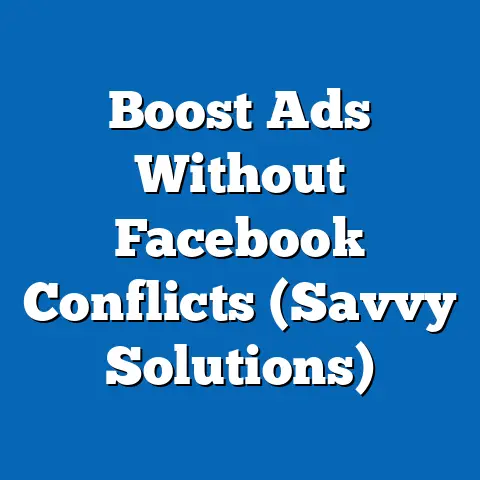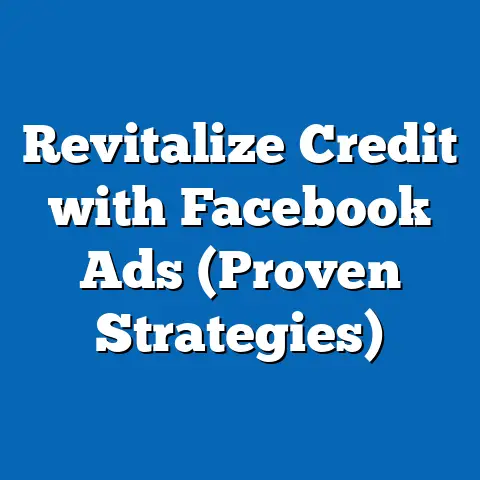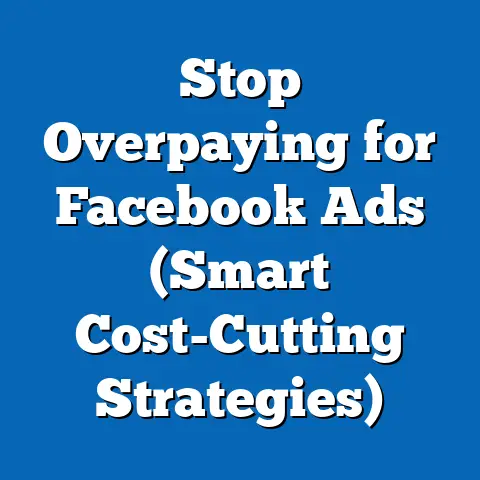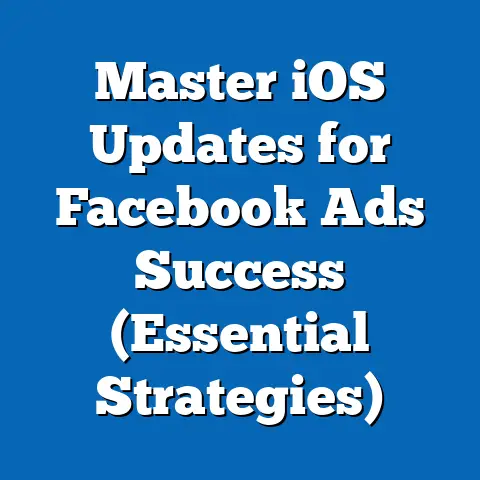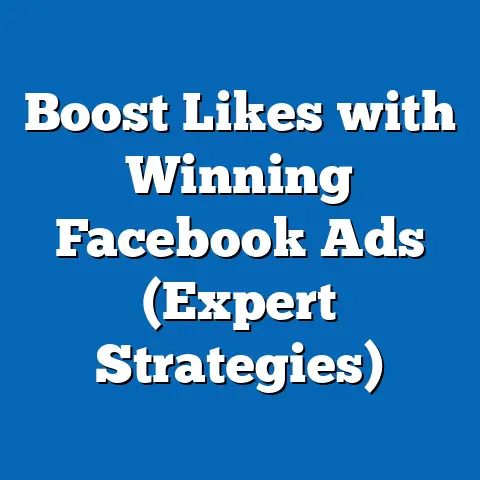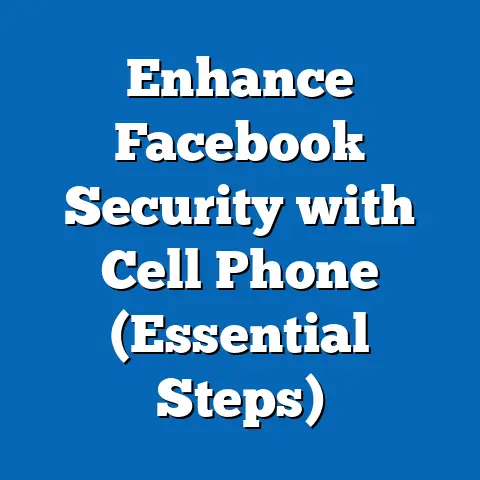Craft Effective Facebook Ads (Proven Strategies Inside)
Facebook advertising. Just the thought of it can send shivers down the spine of even seasoned marketers. With algorithms constantly changing and the platform evolving at warp speed, it’s tough to know where to even begin. I’ve been there, trust me. I remember pouring over countless blog posts, attending webinars that promised the moon, and still feeling lost in the sea of metrics and options. But after years of trial and error, countless A/B tests, and more late nights than I care to admit, I’ve finally cracked the code.
What I’ve discovered isn’t some magic bullet or secret hack. It’s about understanding the fundamentals, staying adaptable, and crafting ads that resonate with your audience on a human level. And that’s what I’m here to share with you – proven strategies that will help you craft effective Facebook ads that not only grab attention but also convert leads into loyal customers.
This isn’t about chasing the latest fleeting trend. It’s about building durable, sustainable strategies that stand the test of time. We’re talking about ads that continue to deliver results long after the initial launch. Think of it as planting seeds that grow into a thriving forest, rather than just a patch of wildflowers.
So, buckle up and get ready to transform your Facebook advertising game. Let’s get started.
Before we jump into the nitty-gritty of crafting killer ads, it’s crucial to understand the current state of the Facebook advertising landscape. As of October 2024 (yes, I’m keeping this updated!), Facebook remains a powerhouse in the digital advertising world, despite the rise of other platforms like TikTok and Instagram. It boasts a massive user base, with billions of active monthly users, making it a prime platform for reaching a diverse range of audiences.User Demographics and Behavior:
Facebook isn’t just for millennials anymore. The platform’s user base spans across various age groups, income levels, and interests. According to recent statistics, while younger demographics might be gravitating towards newer platforms, Facebook still holds a significant share of users aged 25-54. This is crucial because it means you can target specific demographics based on your product or service.
What’s more, Facebook users are highly engaged. They spend a significant amount of time on the platform, scrolling through their feeds, interacting with content, and connecting with friends and family. This presents a golden opportunity for advertisers to capture their attention and drive conversions.
Types of Facebook Ads:
Facebook offers a variety of ad formats, each with its unique strengths and benefits:
- Image Ads: Simple and effective, image ads are great for showcasing your product or service with a compelling visual. They’re easy to create and can be highly engaging when done right.
- Video Ads: Video ads are incredibly powerful for capturing attention and telling a story. They can be used to showcase product demos, customer testimonials, or behind-the-scenes footage.
- Carousel Ads: Carousel ads allow you to display multiple images or videos in a single ad unit. This format is perfect for showcasing a range of products or highlighting different features of a single product.
- Collection Ads: Designed for e-commerce businesses, collection ads allow users to browse and purchase products directly from the ad.
- Instant Experience Ads: These full-screen ads provide an immersive experience for users, allowing them to explore products, watch videos, and browse content without leaving the Facebook app.
- Lead Ads: Lead ads are designed to capture leads directly from Facebook. They make it easy for users to submit their contact information without having to visit your website.
The Facebook Advertising Algorithm:
Understanding how Facebook’s advertising algorithm works is crucial for maximizing your ad performance. The algorithm determines which ads are shown to which users based on a variety of factors, including:
- Bid Amount: How much you’re willing to pay for each ad impression or click.
- Ad Quality: The relevance and quality of your ad, as determined by user feedback and engagement metrics.
- Estimated Action Rate: The likelihood that users will take the desired action (e.g., click, purchase, sign up) after seeing your ad.
- Relevance Score: A metric that measures how relevant your ad is to your target audience.
To succeed on Facebook, you need to create high-quality ads that are relevant to your target audience and bid competitively.
Mobile Optimization:
In today’s mobile-first world, mobile optimization is non-negotiable. The vast majority of Facebook users access the platform via mobile devices, so your ads need to be optimized for mobile viewing. This means using responsive ad formats, optimizing images and videos for mobile screens, and ensuring that your landing pages are mobile-friendly.
Key Takeaway:
The Facebook advertising landscape is vast and complex, but understanding its key components is essential for success. By knowing your audience, choosing the right ad formats, and understanding how the algorithm works, you can create ads that resonate with your target audience and drive results.
Next Steps:
- Research your target audience to understand their demographics, interests, and behaviors on Facebook.
- Explore the different ad formats available and choose the ones that are best suited for your product or service.
- Familiarize yourself with the Facebook advertising algorithm and how it determines ad placements.
- Ensure that your ads are optimized for mobile viewing.
Section 2: Crafting Your Message
Now that we’ve got a handle on the landscape, let’s talk about the heart of your ad: the message. A visually stunning ad with poor messaging is like a beautiful car with a broken engine – it looks great, but it won’t get you anywhere.
The Importance of a Strong Value Proposition:
Your value proposition is the core reason why someone should choose your product or service over the competition. It’s the unique benefit that you offer to your customers. In the context of Facebook ads, your value proposition needs to be clear, concise, and compelling. It should immediately grab the attention of your target audience and make them want to learn more.
Identifying and Articulating Pain Points:
To craft a compelling message, you need to understand your target audience’s pain points. What are their challenges? What problems are they trying to solve? Once you know their pain points, you can position your product or service as the solution.
For example, if you’re selling project management software, your target audience might be struggling with disorganized tasks, missed deadlines, and poor team communication. Your ad copy could highlight how your software helps them streamline their workflows, improve collaboration, and stay on top of their projects.
Psychological Triggers:
Psychological triggers are powerful tools that can be used to influence user behavior. Some common psychological triggers include:
- Urgency: Creating a sense of urgency can encourage users to take action immediately. For example, “Limited-time offer! Get 50% off today only.”
- Scarcity: Highlighting the limited availability of your product or service can create a sense of FOMO (fear of missing out) and drive conversions. For example, “Only 10 spots left! Sign up now.”
- Social Proof: Showcasing positive reviews, testimonials, or case studies can build trust and credibility. For example, “Join thousands of satisfied customers who have transformed their businesses with our software.”
Effective Ad Copy Examples:
Let’s take a look at some examples of effective ad copy from various industries:
- E-commerce: “Shop our new collection of sustainable clothing and make a positive impact on the planet. Free shipping on orders over $50.” (Value proposition: sustainable clothing; Benefit: free shipping; Trigger: social responsibility)
- Software: “Tired of managing your projects with spreadsheets? Our project management software helps you streamline your workflows, improve collaboration, and stay on top of your deadlines. Start your free trial today!” (Pain point: spreadsheet management; Solution: project management software; Trigger: free trial)
- Services: “Transform your body and boost your confidence with our personalized fitness program. Get a free consultation today and discover how we can help you achieve your goals.” (Value proposition: personalized fitness program; Benefit: body transformation and confidence; Trigger: free consultation)
The Power of Storytelling:
Storytelling is a powerful way to connect with your audience on an emotional level. By weaving a narrative that resonates with their values and aspirations, you can create a deeper connection and build brand loyalty.
For example, instead of simply listing the features of your product, you could tell a story about how it helped a customer overcome a challenge or achieve a goal. This makes your ad more relatable and memorable.
Key Takeaway:
Crafting a compelling message is essential for capturing the attention of your target audience and driving conversions. By understanding their pain points, using psychological triggers, and weaving a compelling narrative, you can create ads that resonate with your audience on an emotional level.
Next Steps:
Now it’s time to make it visually appealing. In the fast-paced world of social media, visuals are king. They’re the first thing people see, and they’re what ultimately determine whether or not someone stops scrolling and pays attention to your ad.The Significance of Visuals:
Think about it. You’re scrolling through your Facebook feed, bombarded with posts, updates, and ads. What makes you stop and take notice? It’s usually a visually striking image or video. Visuals are the hook that grabs your attention and makes you want to learn more.
Best Practices for Images and Videos:
- Resolution: Use high-resolution images and videos that are clear and crisp. Blurry or pixelated visuals will make your ad look unprofessional and deter users from clicking.
- Aspect Ratios: Pay attention to aspect ratios. Facebook recommends using a 1:1 aspect ratio for image ads and a 9:16 aspect ratio for video ads.
- Branding Consistency: Maintain branding consistency across all your visuals. Use your brand colors, fonts, and logo to create a cohesive and recognizable brand identity.
Color Psychology:
Colors can evoke emotions and influence user behavior. Understanding color psychology can help you choose colors that are aligned with your brand and resonate with your target audience.
- Blue: Trust, security, stability
- Green: Nature, health, growth
- Red: Excitement, passion, energy
- Yellow: Happiness, optimism, creativity
- Purple: Luxury, sophistication, wisdom
Eye-Catching Thumbnails:
For video ads, your thumbnail is crucial. It’s the first thing people see, so it needs to be eye-catching and relevant to the content of your video. Use a high-quality image that captures the essence of your video and entices users to click.
Graphics, Animations, and Text Overlays:
Graphics, animations, and text overlays can enhance your visuals and make your ads more engaging. However, it’s important to use them sparingly and avoid overwhelming the audience. Keep your visuals clean and uncluttered, and make sure that your text is easy to read.
Key Takeaway:
Visuals are essential for attracting attention and driving engagement on Facebook. By using high-quality images and videos, paying attention to aspect ratios, maintaining branding consistency, understanding color psychology, and creating eye-catching thumbnails, you can create ads that stand out from the crowd.
Next Steps:
- Invest in high-quality images and videos that showcase your product or service in the best light.
- Experiment with different color palettes to see what resonates with your target audience.
- Create eye-catching thumbnails for your video ads that entice users to click.
- Use graphics, animations, and text overlays sparingly to enhance your visuals without overwhelming the audience.
- A/B test different visual variations to see what performs best.
Section 4: Targeting the Right Audience
You could have the most beautifully crafted ad in the world, but if it’s shown to the wrong people, it’s like shouting into the void. That’s where audience targeting comes in. Targeting the right audience is crucial for maximizing your ad effectiveness and driving conversions.
The Importance of Audience Segmentation:
Audience segmentation involves dividing your target audience into smaller, more specific groups based on their demographics, interests, behaviors, and other characteristics. This allows you to create ads that are tailored to the needs and preferences of each segment, making them more relevant and engaging.
Facebook’s Audience Targeting Options:
Facebook offers a wide range of audience targeting options, including:
- Demographic Targeting: Target users based on age, gender, education, relationship status, and other demographic factors.
- Geographic Targeting: Target users based on their location, such as country, region, city, or even zip code.
- Interest Targeting: Target users based on their interests, hobbies, and activities.
- Behavior Targeting: Target users based on their online behavior, such as their purchase history, website visits, and app usage.
Custom Audiences:
Custom audiences allow you to target users who have already interacted with your business, such as website visitors, email subscribers, or customers. This is a powerful way to re-engage users who are already familiar with your brand and increase your chances of conversion.
Lookalike Audiences:
Lookalike audiences allow you to target users who are similar to your existing customers or website visitors. This is a great way to expand your reach and find new customers who are likely to be interested in your product or service.
Facebook Pixel:
The Facebook Pixel is a small piece of code that you can install on your website to track user behavior. This allows you to track conversions, optimize your ad campaigns, and create custom audiences based on website visitors.
A/B Testing for Audience Targeting:
A/B testing involves testing different audience targeting options to see what performs best. This can help you identify the most effective audience segments for your ads and optimize your targeting strategy accordingly.
Key Takeaway:
Targeting the right audience is crucial for maximizing your ad effectiveness and driving conversions. By using Facebook’s audience targeting options, creating custom audiences and lookalike audiences, and tracking user behavior with the Facebook Pixel, you can create ads that are highly relevant to your target audience.
Next Steps:
- Segment your target audience into smaller, more specific groups.
- Use Facebook’s audience targeting options to target users based on their demographics, interests, and behaviors.
- Create custom audiences based on website visitors, email subscribers, and customers.
- Create lookalike audiences to expand your reach and find new customers.
- Install the Facebook Pixel on your website to track user behavior.
- A/B test different audience targeting options to see what performs best.
Section 5: Budgeting and Ad Spend
Okay, you’ve got your message, your visuals, and your target audience. Now, let’s talk about money. Budgeting and ad spend can be a tricky topic, but it’s essential for maximizing your ROI and achieving your advertising goals.
Setting a Realistic Budget:
Before you start running Facebook ads, it’s important to set a realistic budget. This will depend on a variety of factors, including your advertising goals, target audience, and industry.
Start by determining how much you’re willing to spend on advertising and how much you can afford to lose. It’s important to remember that Facebook advertising is an investment, and it may take some time to see a return on your investment.
Facebook’s Bidding System:
Facebook uses a bidding system to determine which ads are shown to which users. You can choose between manual bidding and automatic bidding strategies.
- Manual Bidding: With manual bidding, you set your own bid amount for each ad impression or click. This gives you more control over your ad spend, but it also requires more monitoring and optimization.
- Automatic Bidding: With automatic bidding, Facebook automatically sets your bid amount based on your advertising goals and budget. This is a more hands-off approach, but it may not always be the most cost-effective.
Monitoring Ad Performance:
Once your ads are running, it’s important to monitor their performance closely. Pay attention to metrics such as cost per click (CPC), click-through rate (CTR), and return on ad spend (ROAS).
If your ads aren’t performing well, you may need to adjust your budget, targeting, or ad creative.
Lifetime Budgets vs. Daily Budgets:
Facebook offers two types of budgets: lifetime budgets and daily budgets.
- Lifetime Budgets: With a lifetime budget, you set a total amount that you’re willing to spend over the entire duration of your ad campaign. This is a good option if you have a fixed budget and want to ensure that you don’t overspend.
- Daily Budgets: With a daily budget, you set an amount that you’re willing to spend each day. This is a good option if you want to have more control over your ad spend and adjust your budget based on performance.
Seasonality and Trends:
When planning your ad spend, it’s important to consider seasonality and trends. For example, if you’re selling holiday gifts, you’ll want to increase your ad spend during the holiday season.
Key Takeaway:
Budgeting and ad spend are crucial for maximizing your ROI and achieving your advertising goals. By setting a realistic budget, understanding Facebook’s bidding system, monitoring ad performance, and considering seasonality and trends, you can optimize your ad spend and drive results.
Next Steps:
- Determine your advertising goals and set a realistic budget.
- Choose between manual bidding and automatic bidding strategies.
- Monitor your ad performance closely and adjust your budget, targeting, or ad creative as needed.
- Consider using lifetime budgets or daily budgets based on your needs.
- Factor in seasonality and trends when planning your ad spend.
Section 6: Measuring Success and Optimizing Campaigns
You’ve launched your campaign, spent some money, and hopefully, you’re seeing some results. But how do you know if your ads are truly successful? And how can you make them even better? That’s where measuring success and optimizing campaigns comes in. This is where data becomes your best friend.
Key Performance Indicators (KPIs):
KPIs are the metrics that you use to track the performance of your Facebook ads. Some common KPIs include:
- Engagement Rate: The percentage of users who interact with your ad (e.g., like, comment, share).
- Conversion Rate: The percentage of users who take the desired action (e.g., purchase, sign up, download).
- Click-Through Rate (CTR): The percentage of users who click on your ad.
- Cost Per Click (CPC): The amount you pay each time someone clicks on your ad.
- Return on Ad Spend (ROAS): The amount of revenue you generate for every dollar you spend on advertising.
Facebook Ads Manager:
Facebook Ads Manager is a powerful tool that allows you to analyze your ad performance and gain insights into audience behavior. You can use Ads Manager to track your KPIs, view detailed reports, and make data-driven decisions to optimize your campaigns.
Interpreting Analytics Data:
Interpreting analytics data can be overwhelming, but it’s essential for optimizing your campaigns. Start by focusing on the KPIs that are most important to your business goals.
For example, if you’re trying to drive sales, you’ll want to focus on conversion rate and ROAS. If you’re trying to build brand awareness, you’ll want to focus on engagement rate and reach.
Continuous Testing and Iteration:
Continuous testing and iteration are essential for refining your ad strategies over time. A/B test different ad variations to see what performs best, and use the data to inform your future campaigns.
Case Studies:
Let’s take a look at a couple of case studies that exemplify the importance of measurement and optimization:
- Case Study 1: A small e-commerce business was struggling to generate sales with their Facebook ads. After analyzing their data, they discovered that their ads were being shown to a broad audience with low engagement rates. They refined their targeting strategy to focus on a more specific audience with higher engagement rates, and their sales increased by 50%.
- Case Study 2: A software company was running Facebook ads to generate leads. They A/B tested different ad copy variations and discovered that ads with a clear call to action performed significantly better. They updated their ad copy to include a strong call to action, and their lead generation increased by 30%.
Key Takeaway:
Measuring success and optimizing campaigns are essential for maximizing your ROI and achieving your advertising goals. By tracking your KPIs, analyzing your data, and continuously testing and iterating, you can refine your ad strategies over time and drive results.
Next Steps:
- Identify the KPIs that are most important to your business goals.
- Use Facebook Ads Manager to track your KPIs and analyze your data.
- A/B test different ad variations to see what performs best.
- Refine your ad strategies based on the data you collect.
- Continuously test and iterate to optimize your campaigns over time.
Conclusion
We’ve covered a lot of ground in this guide, from understanding the Facebook advertising landscape to crafting compelling messages, mastering visual elements, targeting the right audience, budgeting and ad spend, and measuring success and optimizing campaigns.
The key takeaway is that crafting effective Facebook ads is a blend of strategic messaging, compelling visuals, precise targeting, and ongoing optimization. It’s not a one-time effort, but rather a continuous process of learning, testing, and refining your strategies.
Remember the concept of durability in advertising strategies. The insights shared in this article are designed to help you create long-lasting success, not just fleeting moments of attention. By focusing on the fundamentals and staying adaptable, you can create Facebook ads that continue to deliver results long after the initial launch.
So, what are you waiting for? Start implementing these proven strategies in your own Facebook ad campaigns today. Experiment, test, and iterate. The world of Facebook advertising is constantly evolving, but with the right knowledge and approach, you can achieve sustainable results and drive your business to new heights.
Now, go out there and create some amazing Facebook ads! I’m excited to see what you come up with. And remember, I’m always here to help. Feel free to reach out with any questions or challenges you encounter along the way. Happy advertising!

